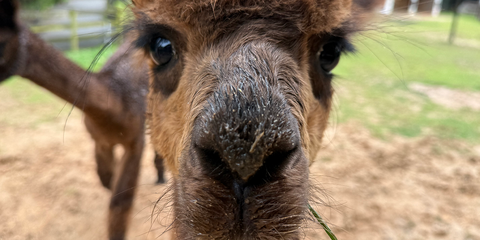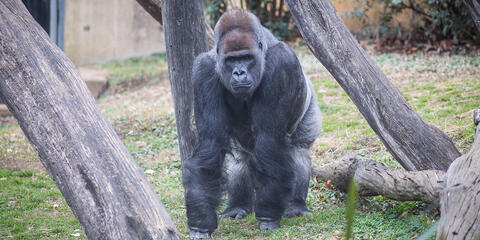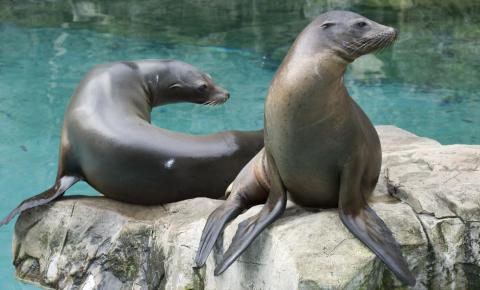Physical Description
Crocodile monitors are large, arboreal (or tree-dwelling) lizards from southeast Asia. They have blackish-green bodies with differing patterns of bright yellow spots and stripes. Their coloration tends to vary by region. These monitors can use their long, powerful tails like a whip for defense. They also use their flat, very sharp, serrated teeth for defense and to capture prey.
Adult males have larger, broader heads than females and have faint hemipenal bulges (the male lizard's reproductive organ), but it can be difficult to tell a male monitor from a female monitor using only visual characteristics. Instead, scientists examine hormones in the blood. A male crocodile monitor's testosterone level is 10 times that of a female's.
Size
They can weigh up to 44 pounds (20 kilograms) and reach over 8 feet in total length (2.4 meters), with the tail accounting for up to two-thirds of this length.
Native Habitat
Crocodile monitors inhabit subtropical and tropical forests at elevations between sea level and 2,427 feet (0 and 740 meters). Populations are very fragmented but range from lowland New Guinea to Papua and West Papua in Indonesia. They only live in forests undisturbed by humans, including floodplain forests, mangrove swamps and riparian woodlands close to water. They can be found on the ground near water but are also arboreal and spend a lot of time in trees.
Lifespan
In human care, crocodile monitors live approximately 10 years (and can live up to 20 years). Their lifespan in the wild is unknown.
Food/Eating Habits
Not much is known about a crocodile monitor's diet in the wild, but researchers believe they eat birds, mammals and fish. They may also occasionally eat eggs, small reptiles and carrion.
At the Smithsonian's National Zoo, the crocodile monitor eats chicks, quail, mice and small rats.
Social Structure
Crocodile monitors are generally solitary in nature and will display aggression to other individuals, especially those of the same sex. However, some monitors in human care will form pair bonds and can be housed together.
Reproduction and Development
Crocodile monitors are very elusive, so not much is known about their reproduction. Scientists are not even sure where the female monitor makes her nest. All current reproductive information comes from monitors in human care. Four to six weeks after mating, the female lays a clutch of four to 12 eggs. A female can lay clutches up to three times per year. Each time, the eggs incubate for five to eight months.
Hatchlings do not emerge simultaneously, and the time between the emergence of the first and last hatchling ranges from two to four weeks. Crocodile monitor hatchlings average 14 to 16 inches (35.5 to 40.6 centimeters) long and grow 2 inches (5 centimeters) per month for the first few years of life.
Conservation Efforts
Crocodile monitors are listed as a species of least concern on International Union for Conservation of Nature's Red List, as of a July 2014 assessment. This species is also listed on CITES Appendix II — which means that it is not threatened with extinction but may be in the future if trade is not controlled — but does not have protected status in New Guinea. This species is difficult to assess, and scientists believe its population is in decline.
The main threat facing crocodile monitors is loss of habitat resulting from deforestation from logging and the conversion of land for agriculture. This is of particular concern because crocodile monitors avoid interactions with humans. These lizards are also hunted for their skin and meat, which is in high demand within global and local markets. Crocodile monitors have recently entered the pet trade, and it is unclear whether this will have a significat impact on their numbers in the wild.
Help this Species
- Reduce, reuse and recycle — in that order! Cut back on single-use goods, and find creative ways to reuse products at the end of their life cycle. Choose recycling over trash when possible.
- Practice ecotourism by being an advocate for the environment when you’re on vacation. During your travels, support, visit or volunteer with organizations that protect wildlife. Shop smart too! Avoid buying products made from animals, which could support poaching and the illegal wildlife trade.
- Share the story of this animal with others. Simply raising awareness about this species can contribute to its overall protection.
Animal News

Zoo Welcomes Alpacas ‘Rainstorm’ and ‘Coffee Cup’


